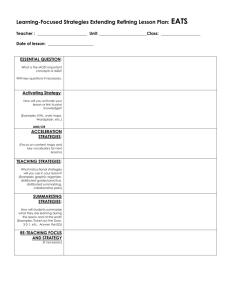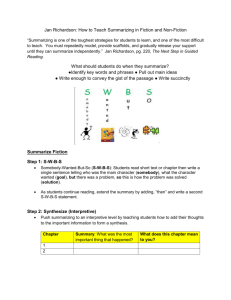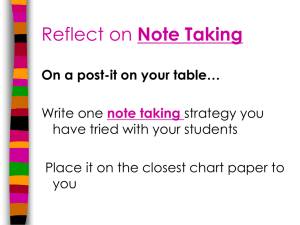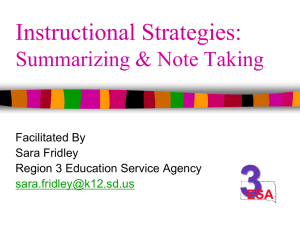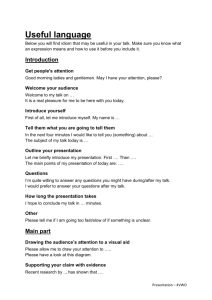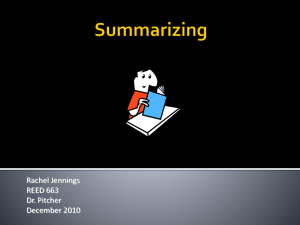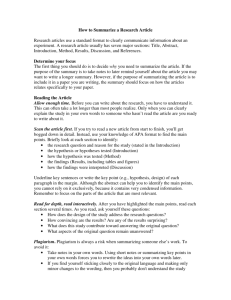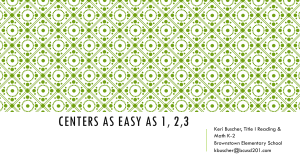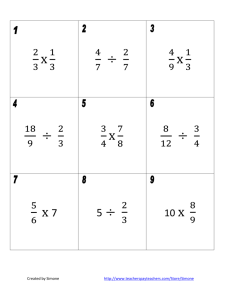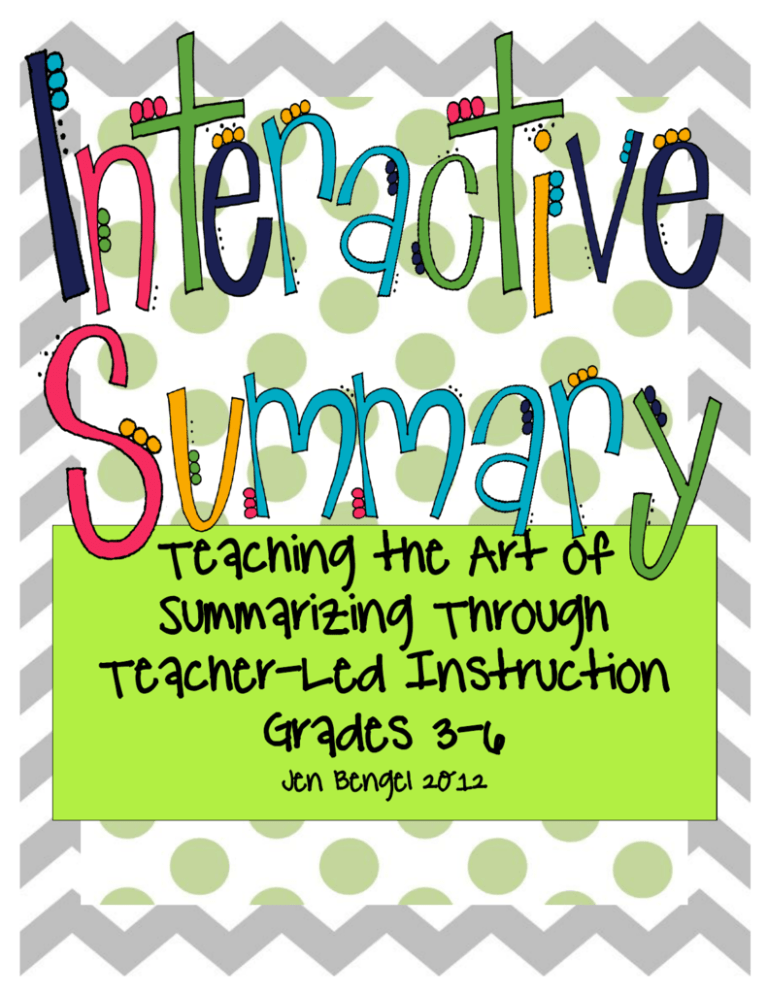
Teaching the Art of
Summarizing Through
Teacher-Led Instruction
Grades 3-6
Jen Bengel 2012
Rationale::
Summarizing is one of the toughest reading skills to teach
intermediate students. When asked to summarize a text, most
students want to either tell every little detail of what happened in a
story or they tell not much at all. Summarizing a text orally is
challenging, but it is even more difficult to master in written form.
According to the Common Core State Standards, by grade 3
students should be able to: RL.3.2. Recount stories, including fables,
folktales, and myths from diverse cultures; determine the central
message, lesson, or moral and explain how it is conveyed through key
details in the text. The following lessons will focus on: determining the
central message…key details in the text.
Interactive summarizing is a teacher-led, whole-group activity,
where students are actively involved as the teacher models the skill of
summarizing. This strategy can be practiced over-and-over again
throughout the course of the year.
Before teachers can ask their students to go and write a
summary, they need to have modeled the skill several times. This
lesson could be completed every week during the reader’s workshop or
reading time. The summary can remain up all week. Summaries can be
written based on literature read together in class, whether you use an
Interactive Read-Aloud model or a basal.
http://www.teacherspayteachers.com/Store/Jen-Bengel
Teaching Grammar, Mechanics, and Spelling
from the Interactive Summary:
There are endless possibilities for using the class-created summary
sheet to teach other skills throughout the week. The following is a list
of just a few ideas.
1. If the class is working on suffixes, a lesson might be to find all
the words in the summary that have suffixes and circle them.
Students could then look for anything they notice about the
words with suffixes and make a list of patterns.
2. If the class is working on sentence structure in writing, they
could look through the summary, circle all the subjects and
underline all the predicates.
3. If the class is studying word choice, they could hunt for strong
verb use in the summary and talk about what they notice.
4. If they are studying comma usage, they could find places in the
summary where commas may have been used incorrectly.
5. If looking at sentence starters, the class could highlight the first
word of every sentence and talk about what they noticed. This
activity is fun to make a list of all the things noticed and use as
an anchor chart.
**These are just a few examples…the possibilities are endless!!
http://www.teacherspayteachers.com/Store/Jen-Bengel
The Introductory Lesson:
Before jumping right into summarizing a text, the teacher first
needs to set the foundation for what a summarry is and is not. Also,
tell the students WHY we summarize. Give them a purpose for their
learning so they know what they are about to work on is meaningful.
Take 10-15 minutes to have a class discussion about summarizing. Make
a class chart of what summarizing is and is not. You may even make a
class chart with a list of reasons why we summarize. The following is an
example of what your chart may look like.
We write summaries of what we have read so that we can share
what the main idea of the text is about with others.
What a summary is…
What a summary is NOT…
This will be filled in as a class. Some examples might include…
Retelling the main idea
Retelling key details in a story
Including all the little parts
Naming all the characters
http://www.teacherspayteachers.com/Store/Jen-Bengel
Interactive Summary:
Materials needed:
*chart paper and marker
*a pointer stick
*previously read text
-it is helpful, but not necessary, if every student has a copy of
the text so they can page through as the summary is being
written.
The lesson:
1. Gather students in a comfortable area in the room where they can all
see the chart paper.
2. Begin the summary by asking students retell what they remember
happened in the text with a partner.
a. This will help them to begin thinking about the text and
make sure everyone is actively involved.
3. After a few minutes, ask a few students to share with the group.
4. Ask students, ‘if you were to write a summary about this text, what
do you think would make a really great beginning sentence?’
a. Take examples from several students and your own
thinking to write the introductory sentence on the chart
paper.
http://www.teacherspayteachers.com/Store/Jen-Bengel
5. Once the sentence is written, read it back to the class and ask for
suggestions. It’s okay to mark up the work a little bit. This is a great
example to students that writing can get messy and that’s okay.
6. Move through the text with the students, asking them to think
carefully if what they’re suggesting for the class summary is a key
detail that is needed.
7. After you write each sentence, read it back to the class. Ask if any
changes need to be made.
8. Once the summary is written, use a pointer stick and practice
reading the summary aloud as a whole group.
a. You can make this really fun by playing a game.
b. Tell the students that they are only supposed to read the
word you are pointing to. If anyone reads ahead you have to
start over!
c. This game teaches oral reading fluency strategies, such
as pausing at commas and periods. The kids love it!
****Thank you to Teaching in a Small Town from TpT for the cover
graphics!
Copyright © 2012 Jen Bengel
All rights reserved by author.
Permission to copy for single classroom use only.
Electronic distribution limited to single classroom use only.
Not for public display.
http://www.teacherspayteachers.com/Store/Jen-Bengel

